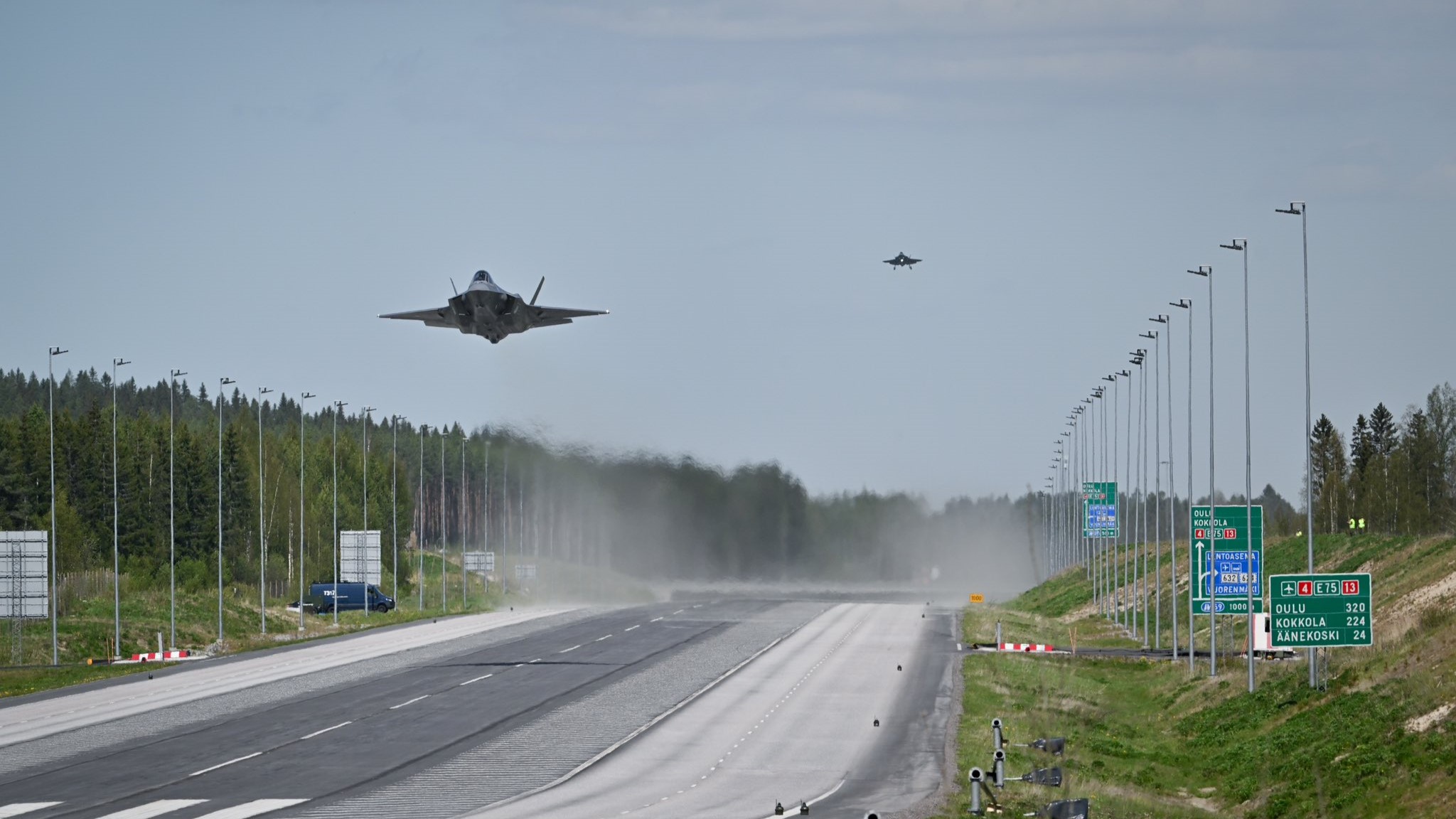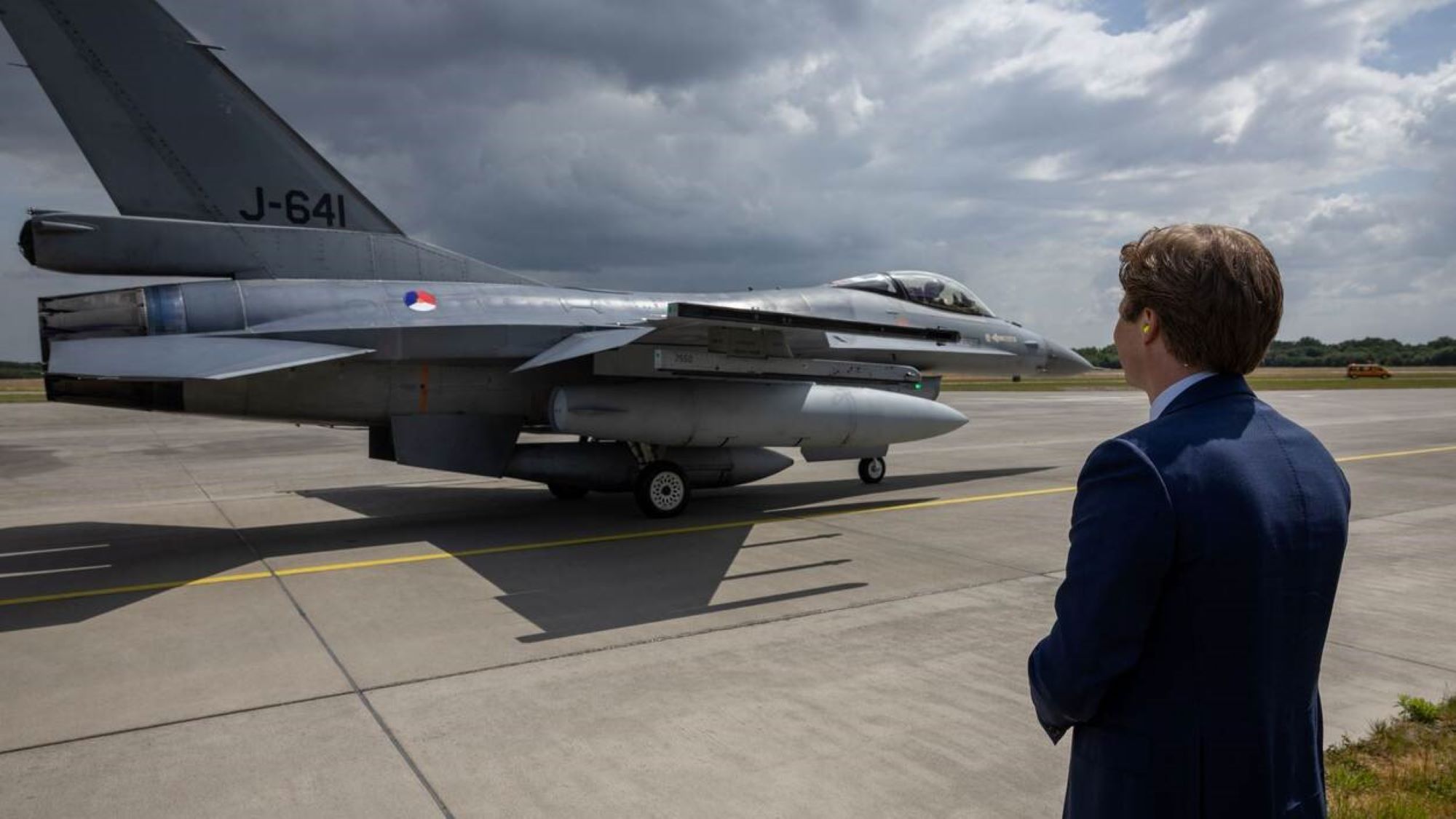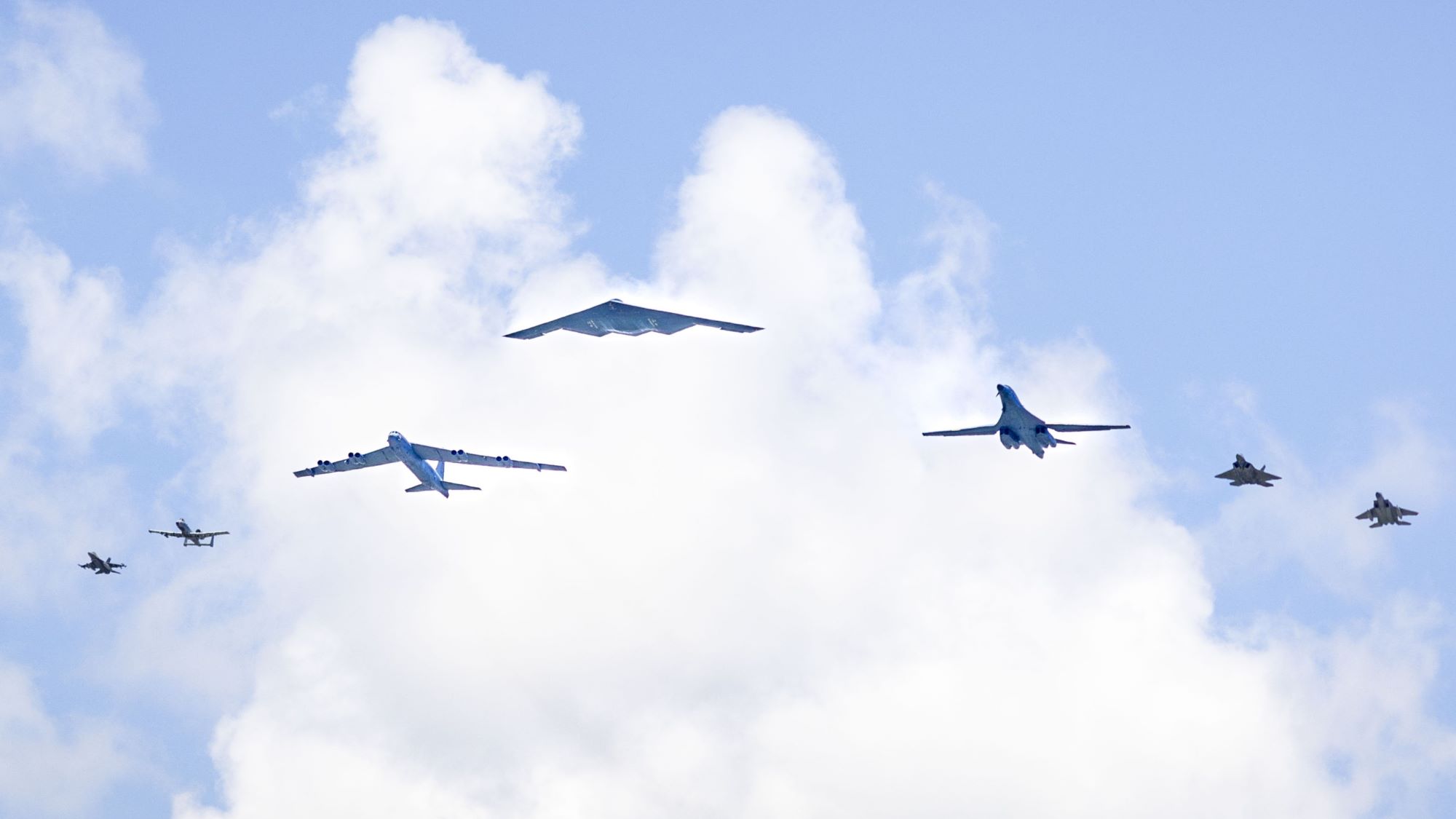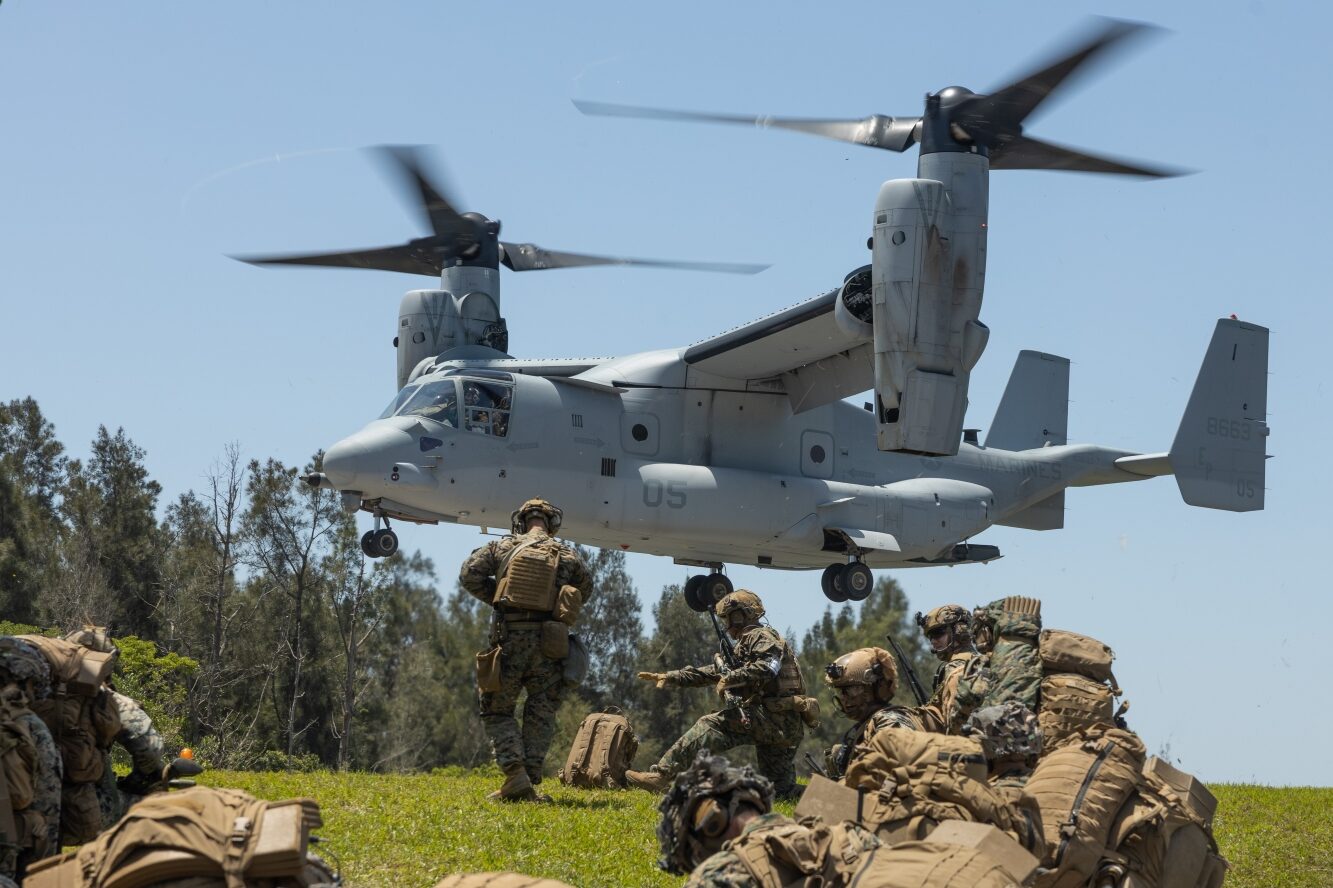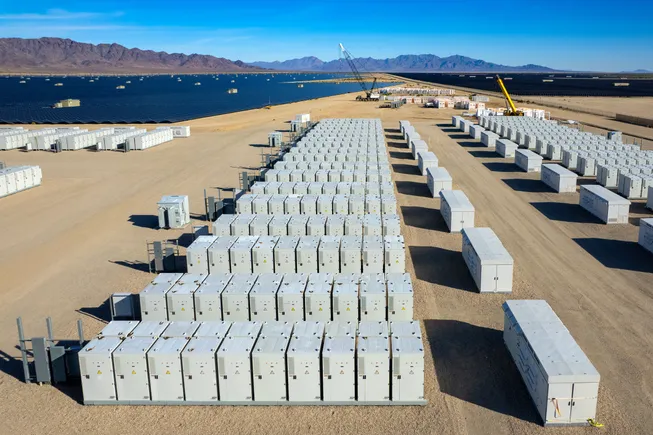NATO summit could see 5% spending pledge, but it’s not that simple: Analysts
One official from an eastern NATO nation told Breaking Defense that a plan to create two different pots of spending could actually cause problems for nations who are planning to exceed the new defense target.


US President Donald Trump speaks during his meeting with former NATO Secretary General Jens Stoltenberg at Winfield House, London (Getty Images)
BELFAST — As the NATO summit approaches, some foreign leaders seem to have warmed to a 5 percent spending pledge through a novel, two-tiered approach — but one that comes with its own significant caveats, challenges and strings attached, analysts said.
The ambitious approach is based on a reported proposal from NATO chief Mark Rutte that ramps up defense spending to a high mark of 5 percent GDP through a split between “core” capabilities and additional as-of-yet ill-defined security investments. Specifically, allies would dedicate 3.5 percent GDP to their defense and equipment budgets, with a further 1.5 percent GDP ringfenced for separate items such as infrastructure and cybersecurity.
It’s a different way to calculate defense spending, and that’s not a mistake: Rutte’s grand vision, analysts told Breaking Defense, is a roundabout way for NATO nations to legitimately announce an otherwise improbable jump to 5 percent GDP defense spending, and hand US President Donald Trump a win at the high-profile summit.
But, they said, many allies would still face an uphill battle in making the leap from the current 2 percent level to 3.5 percent in core spending, not to mention the 1.5 percent in additional spending.
“The fiscal situation of every single country will have an impact on their ability to do this,” said Camille Grand, a former NATO official who is now distinguished policy fellow at the European Council on Foreign Relations. “There are allies struggling to meet 2 [percent] so adding another 1.5 [percent] is quite demanding.”
He also raised the possibility of “those that struggle the most” potentially lobbying to “insert some caveats and a longer timeline” in a bid to meet the spending increase. “Maybe [they could also have] in the back of their mind the idea that in five years from now, Ukraine may be over, the situation might be different, and the Trump administration could be gone.”
No matter how it’s calculated, Rutte’s push represents a “big jump in spending,” and there are “economic difficulties in almost all NATO member-states,” Marion Messmer, senior research fellow in the International Security Programme at Chatham House, said — so, “It’s not clear where the money is going to come from.”
Likewise Tim Lawrenson, a European defense expert, explained that it is a “huge jump” to make for many countries, especially with the “economic travails” of some in western Europe, already burdened with “high existing national debt.” In his view, “a lot will depend” on spending “definitions and timing targets.”
If a timeframe is “somewhere far away” or in line with reports mentioning 2032 as a “possible target,” that could give allies time to “adjust [but] politically, yes, for many countries, it’s going to be very hard,” said Kristi Raik, director of the International Centre for Defence and Security, an Estonian thinktank.
“For the frontline states, it’s so obvious that the threat is next to us and we have to defend ourselves. But then for countries geographically further away, it’s a much harder sell to the public, and I can’t see, so far, that the political leaders in those countries have really made an effort to persuade” their societies, she said.
The “Russian threat argument is probably not sufficient,” she added. Based on those complexities, for some allies, it is “maybe” of greater importance to “stress this risk of US abandonment.”
At least one ally appears to be pushing back on Rutte’s idea, as the Financial Times (FT) reported late last week that Spain is the sole holdout on the issue. Traditionally one of the alliance’s worst spenders, Madrid committed to hit the existing 2 percent spending mark this year, after unveiling a €10.5 billion ($12 billion) military investment plan; per the FT, the government is reluctant to move any further.
Trump’s Shadow Over 5 Percent Push
Senior officials from the Trump administration have been open about the need for European allies to increase defense spending to rebalance the disproportionate contribution from the US and take on greater ownership of their security. At a Ukraine Contact Group meeting in February, US Defense Secretary Pete Hegseth said the 5 percent GDP figure should be a “model for the continent.”
A few smaller nations, those closer to the Russian border have announced plans to increase spending to 5 percent, but a majority of NATO nations fall far behind. (In 2024, the US was estimated to spend approximately 3.4 percent of its GDP on defense, still representing the lion’s share of NATO defense commitments.)
So, Rutte’s purported proposal is “clearly intended to address … the Trump admin’s call for 5 [percent GDP], but with 1.5 [percent] separately badged as related security items to ‘soften the blow,’” said Lawrenson. “It’s not clear whether this two-pronged approach has been pre-cleared with the Trump administration, but Rutte’s closeness to Trump might suggest it has.”
The “only thing” that interests the US administration at the NATO summit is European nations increasing their defense spending, “so Rutte’s proposal is then a response to the expectations of Trump,” said Raik. Rutte’s plan is “aimed” at guaranteeing the Trump administration “remains engaged” in the alliance and that Trump “gets the outcome that he wants,” she added.

NATO defense spending by country as of 2024. (NATO)
Rutte’s dual approach is “probably a bit more realistic” than a plan to simply increase defense spending to 5 percent GDP alone, but Grand said it is based on Trump’s demand and “two types of pressure” facing NATO — “Russian behavior” and the threat of a “wider crisis” expanding beyond Ukraine.
Despite the economic strain the pledge could cause, several analysts said the 1.5 + 3.5 plan had a decent chance of succeeding come July. Bergmann judged he “could see it happening” with an end result that, “Trump gets a big victory.”
Raik pointed to the new German government’s “support” for the idea, saying the plan has a “good chance” of being approved. “But then, of course, there are details to be negotiated about the timeframe and how exactly you define the spending levels.”
Lawrenson didn’t go that far, but said that he expects a “higher [spending] threshold” to be agreed, over and above the existing 2 percent goal.
However, for frontline states already aiming to spend over the 3.5 percent target on pure defense investments, there appears to be some concerns.
Hanno Pevkur, Estonia’s defense minister, told reporters earlier this month that Tallinn would broadly be supportive of the “two-level approach,” if only because it would at least mean “core” spending had gone up to 3.5 percent. But he was wary of any effort to play word games with the alliance’s defense obligations.
“The one thing that is very clear, that we’ve said very clearly, [is] that we do not want to change the definition of the NATO defense spending,” he said. “This is very important. We will not add some new instruments to that. No. … [Do] we want to add something because of the space domain or because of the cyber domain? We can add something, yes. But the core definition has to be the same.”
One official from another eastern NATO nation told Breaking Defense that while the 3.5 percent target is a welcome step to raising spending across the alliance, the plan to create two different pots of spending could actually cause problems for nations who are planning to spend over 3.5 percent on defense.
If a country has been aiming higher, it has had major internal discussions around it, and political fights that required taking money from other priorities in order to fund what the official termed “hard defense” investments. Now, politicians with other interests (such as education or infrastructure) may look to claw back some of that funding under the guise of that other 1.5 percent requirement — in effect, actually cutting back on the amount of true defense spending.
“If we are aiming for 5 percent, that’s something that can be easily explained internally,” the official said. “It’s much harder to explain that we are aiming for 5 percent, but NATO is only asking for 3.5 percent.”

Mark Rutte, NATO Secretary General and President Donald Trump meet at the White House (NATO)
An Even Larger Question?
Of course with 32 nations to wrangle and a historically unpredictable American administration, it’s impossible to say what will come to pass at The Hague. US Ambassador to NATO Matthew Whitaker reportedly said earlier this month that discussions about removing tens of thousands of American troops would start “later this year” — after the NATO summit.
“I think there’s a push in the Pentagon to not blindside Europeans when it comes and to try to do it before the Summit,” Bergmann told Breaking Defense. Conversely, he noted that others with an opposing view are judging, “the whole Summit [could become all about] how America is leaving. … I think there’s an internal fight [in the Pentagon] and an argument about how deep the cuts will be.”
At this stage there is “no clear indication and apparently no decisions from the US side” on the matter, said Raik, but she stressed that a reduced presence in Europe is a “long-term” Washington ambition. Any “significant” drawdown “is something that you can’t do overnight,” she added.
“It will take time and planning and effort. So I don’t think it’s something that would be a very dramatic, abrupt change, and the US obviously has interests to keep some of its forces in Europe for various reasons,” Raik added.
Jan Senior, fellow of transatlantic defense and security at the Center for European Policy Analysis said on Wednesday that cuts to US forces in Europe is not “feasible” ahead of the NATO Summit because of the length of time it takes to work up a global posture review.
“I believe that is still very much in the sort of staffing process” at the moment, he added, on the review itself. As “this [US] administration often moves fast, top down … from announcement to details,” an announcement of some kind that could be used as “leverage, whether it’s behind the scenes or publicly within the NATO Summit,” cannot be ruled out however, according to Senior.
Even if allies approve Rutte’s proposal, it would not lead to the US rethinking its plan to cut troops in Europe, Bergmann argued.
“US troop cuts are not a punishment for [a] lack of European spending,” he shared. “If anything, a massive commitment to increase European defense spending will convince the US it is okay to withdraw.”
In monetary terms, should Europe soon have a need to replace US capabilities, based off a gradual withdrawal, the continent could expect to pay between $226 and $344 billion, according to figures [PDF] from the International Institute for Strategic Studies (IISS).
In a newly released report it shared that to make up for US equipment reserved to support Europe, replacement kit including 400 fighter jets, 20 destroyers, 24 surface-to-air missile batteries, 10 nuclear powered attack submarines, 600 main battle tanks, 800 tracked infantry fighting vehicles, 200 attack helicopters and other high end weapon systems would need to be acquired.





























































































![[Video] The Weekly Break Out Ep. 19: Army aviation’s shakeup and the F-35’s future](https://breakingdefense.com/wp-content/uploads/sites/3/2025/05/EP-19-THUMB-play-button.jpg?#)











